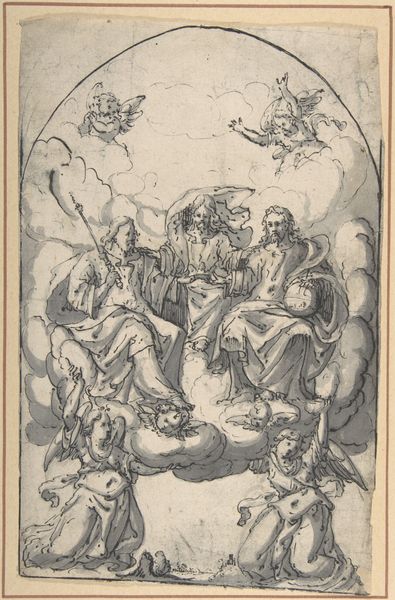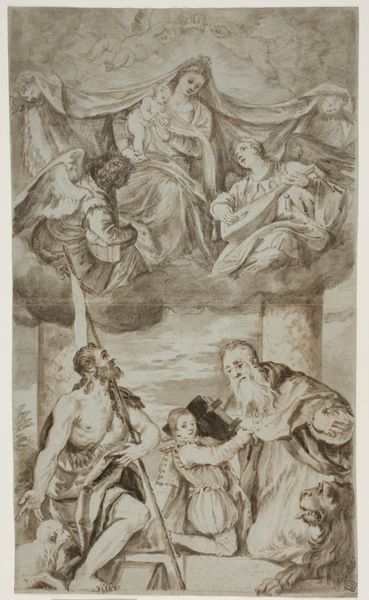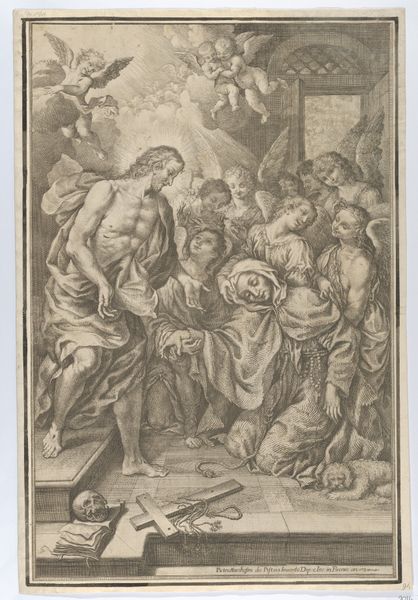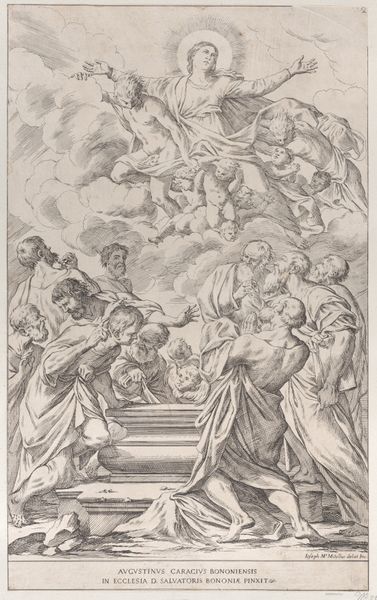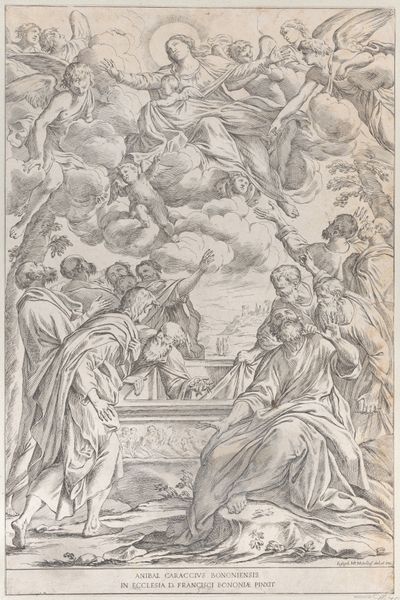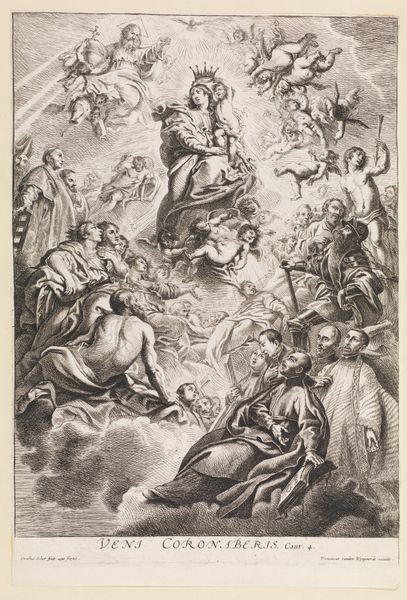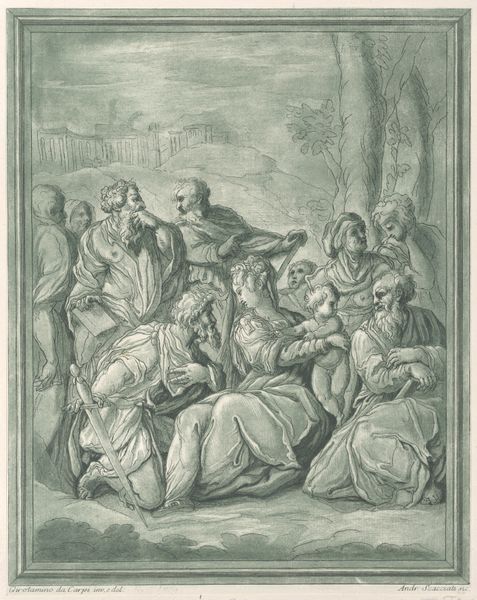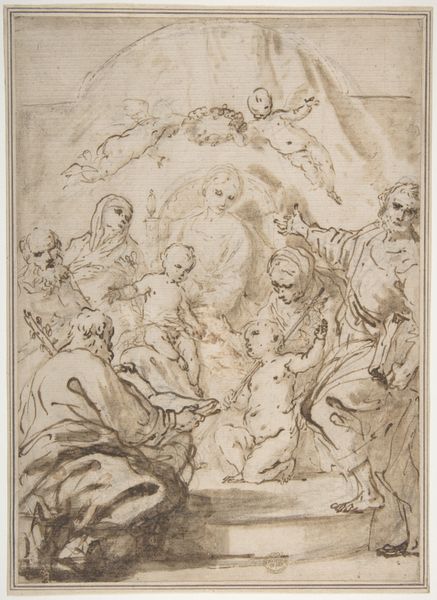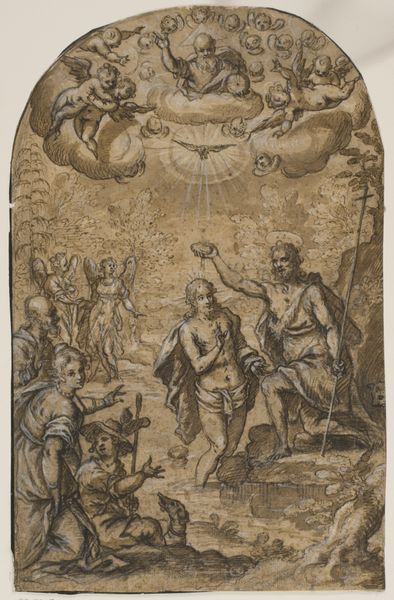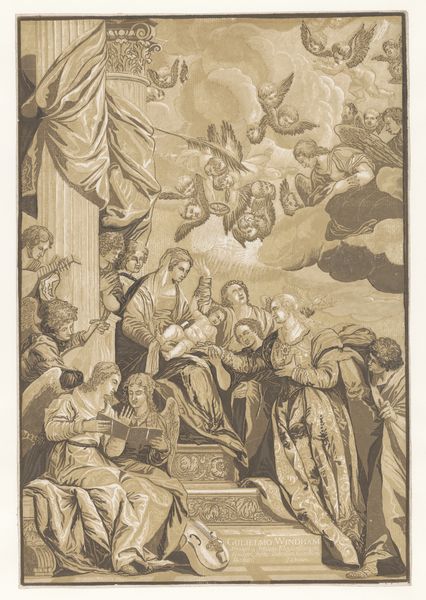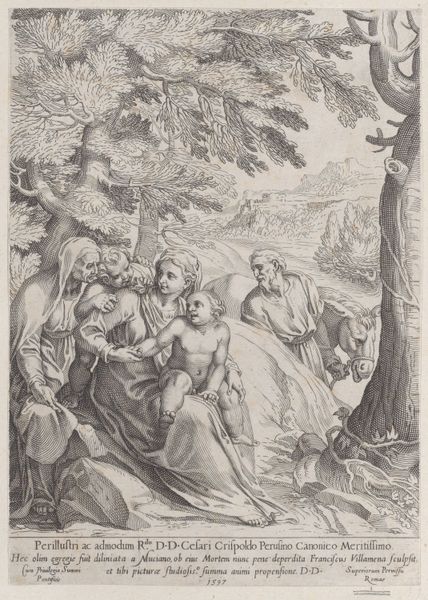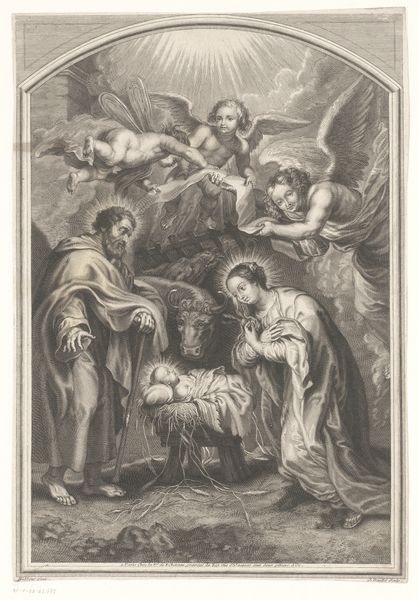
drawing, charcoal
#
drawing
#
narrative-art
#
baroque
#
charcoal drawing
#
figuration
#
charcoal
Dimensions: Sheet: 15 1/16 × 9 7/16 in. (38.2 × 23.9 cm)
Copyright: Public Domain
Curator: Wow, this drawing feels like a whisper, almost secretive in its shadows. The scene, aglow in monochrome, has a gentleness to it that is profoundly moving. Editor: Today we’re observing "Adoration of the Shepherds," a drawing realized in charcoal somewhere between 1650 and 1668. The artwork can be found at the Metropolitan Museum of Art, and its creator is Jan Boeckhorst. Within it we observe figures rendered within this gray monochrome. The style indicates a move in the baroque direction, even though a drawing may indicate an early preparatory state. How might one interpret this artwork in light of the power dynamics inherent to sacred representation? Curator: That's a thought-provoking lens. The shepherds themselves, figures of the working class, are rendered with a raw, almost urgent sincerity. Is Boeckhorst, in depicting their adoration, subtly critiquing social hierarchies or maybe commenting on class and spirituality in that period? Editor: Precisely. It's critical to recognize the art historical significance of who is allowed access to the divine and the space that their representation occupies within that dynamic. But looking more simply, this scene glows from an unseen source; notice how all eyes focus down and to the left? Curator: The chiaroscuro is masterful – dramatic, yet somehow still tender. It softens the potentially didactic religious message and invites more intimate reflection. Editor: There’s almost a proto-cinematic quality to this drawing, with the composition guiding your eye and the figures staged so elegantly. And yes, while rendered with skill and technical expertise, the artist still highlights certain themes and excludes others. The themes in art represent certain dominant cultural interests during different eras and across diverse population groups. Curator: Indeed. Thinking of Baroque art broadly, this image, with its use of shadow and light, does not necessarily glorify power as one might find elsewhere; here, even the most seemingly powerless are made central. What could that tell us about Baroque visual culture? Editor: Perhaps that artists and viewers are perpetually renegotiating our values. The interplay and push-pull are important, even vital. I walk away seeing just that push-pull right in that charcoal medium. Curator: Yes. The piece prompts us to consider who is included, who is excluded, and what possibilities are open.
Comments
No comments
Be the first to comment and join the conversation on the ultimate creative platform.
